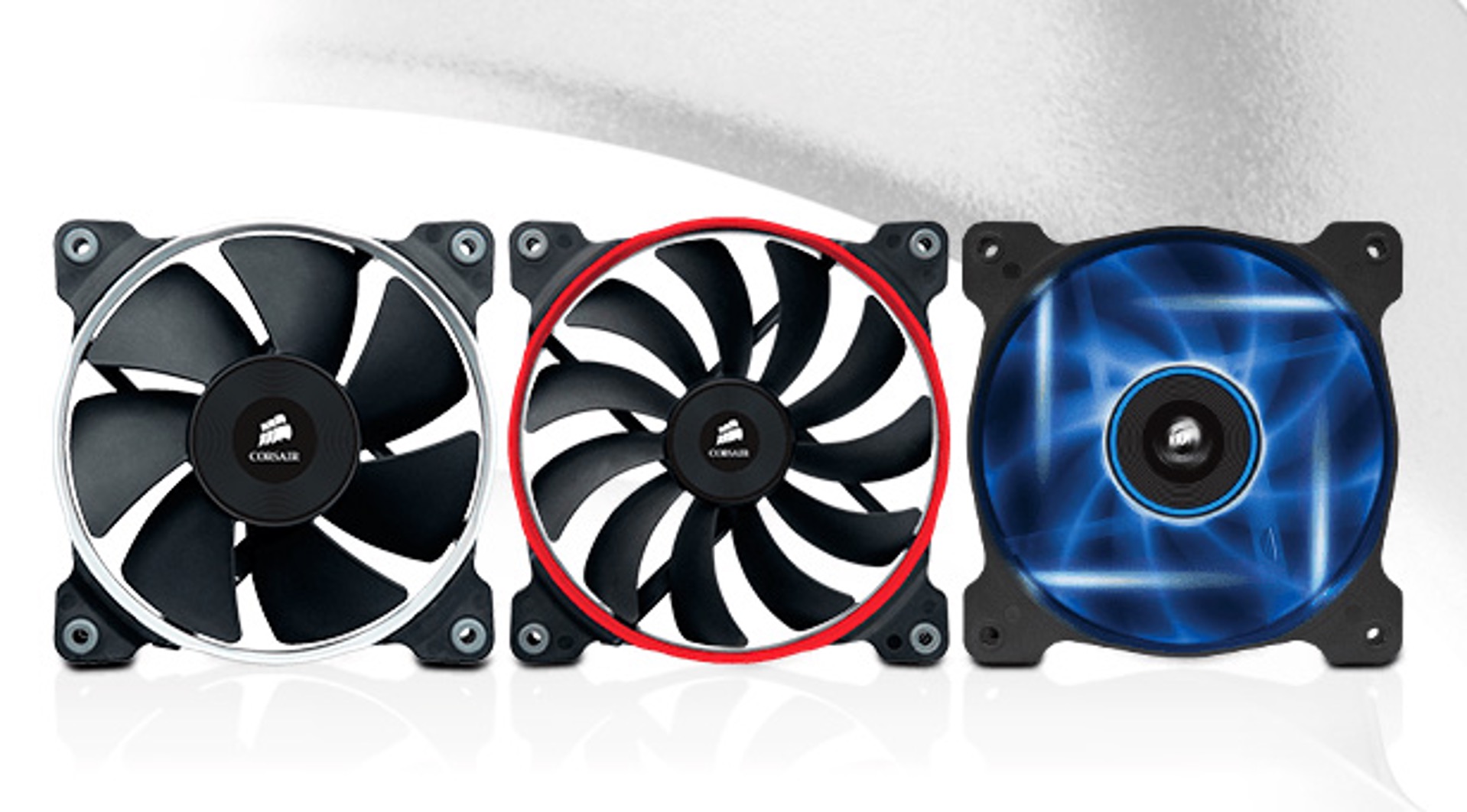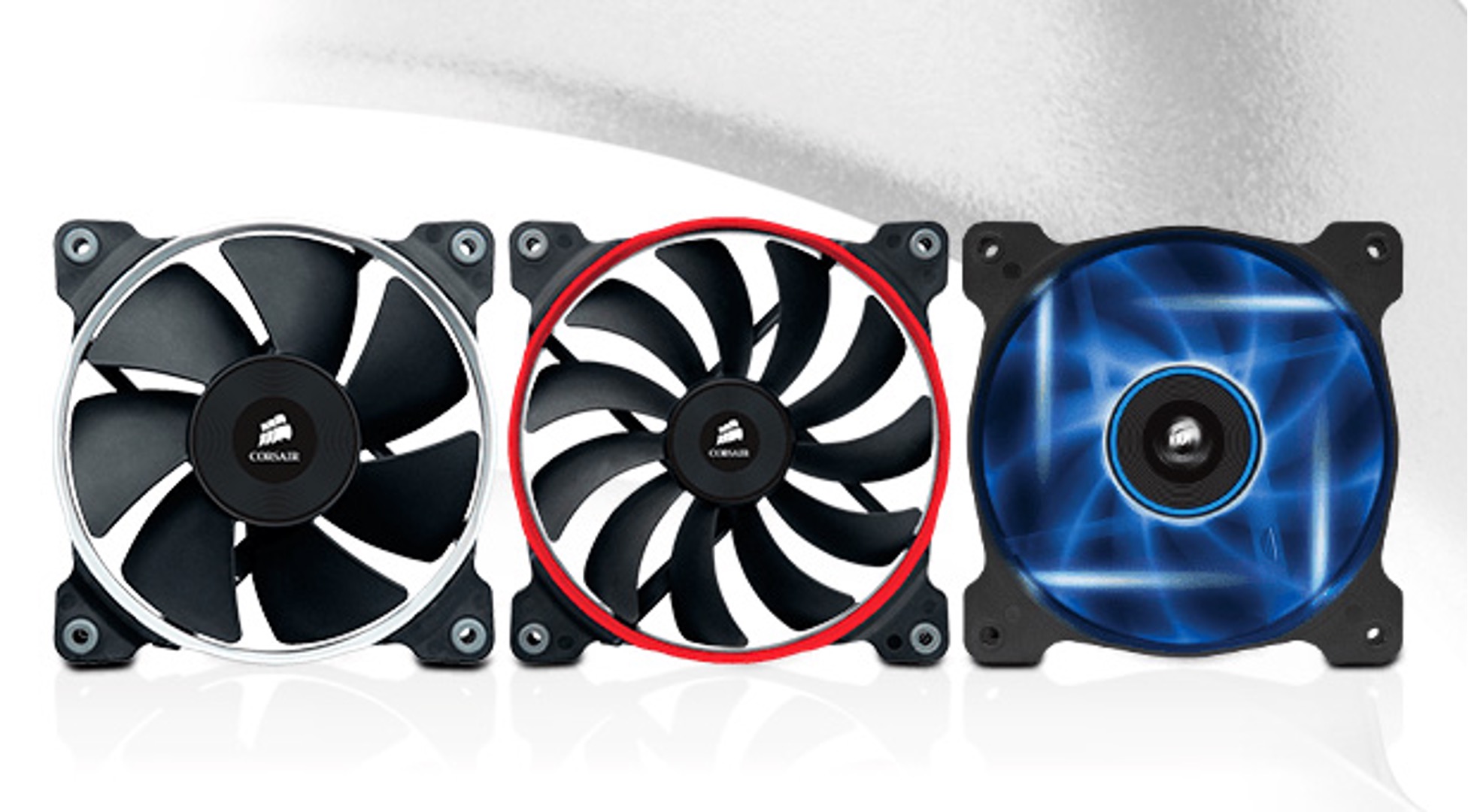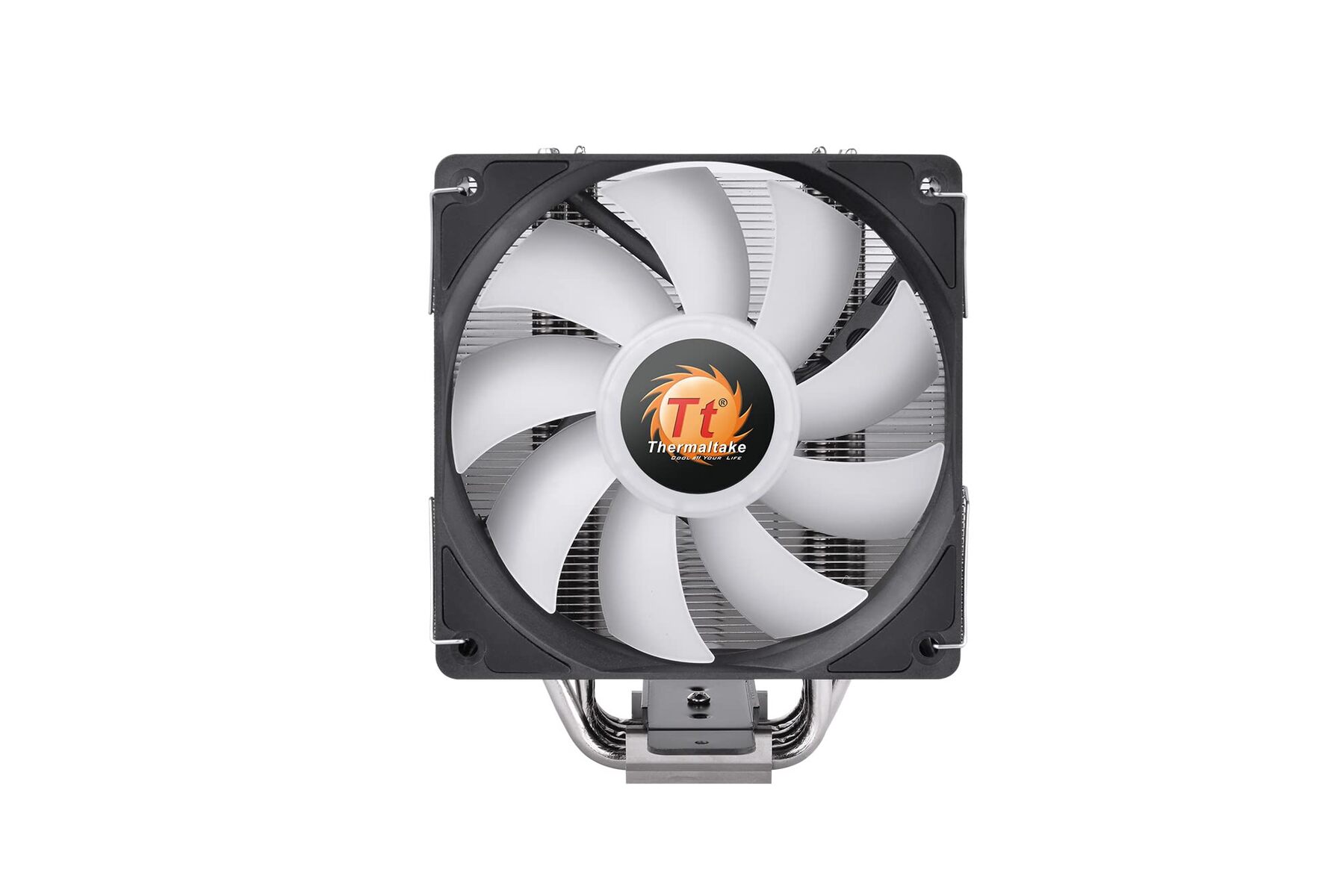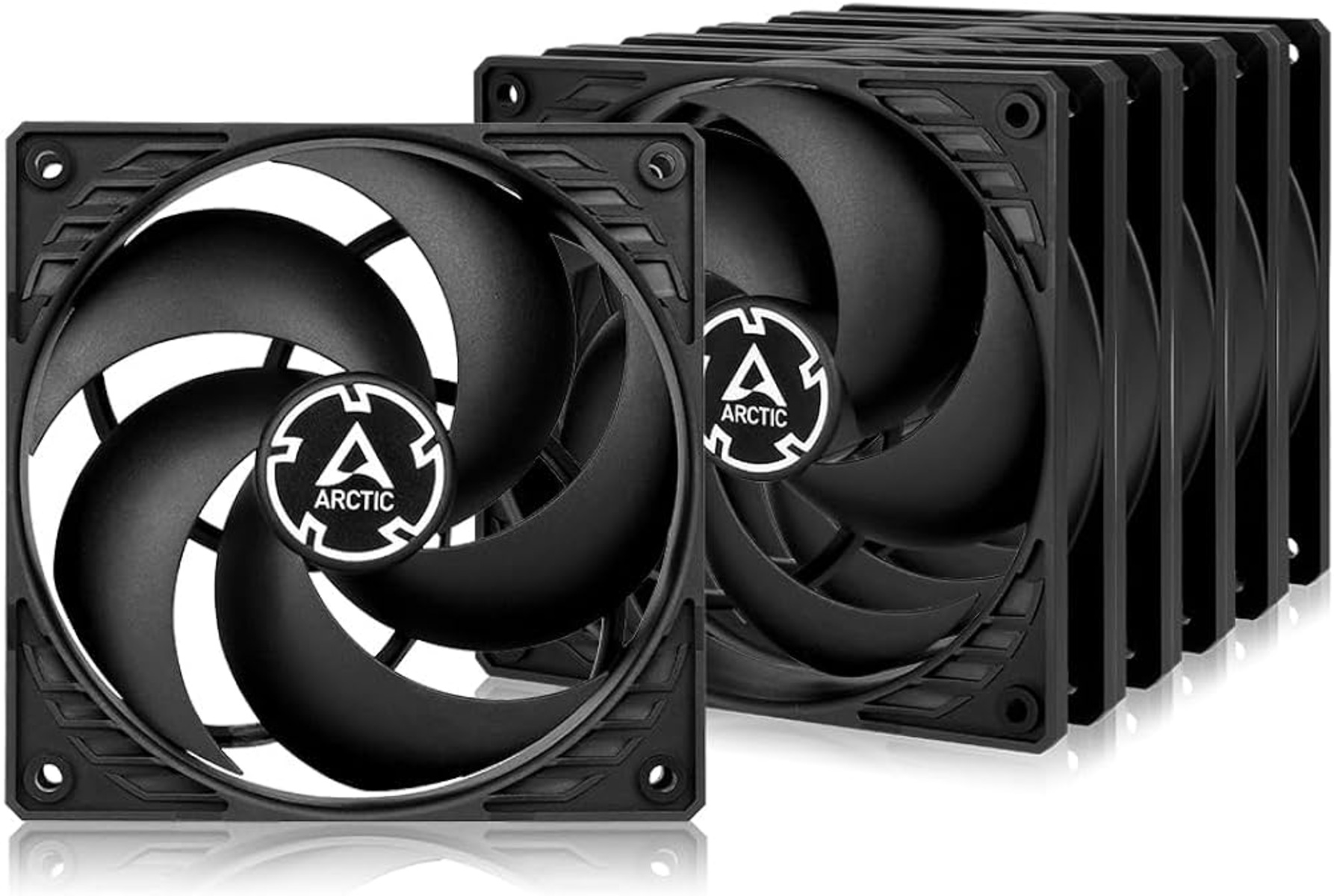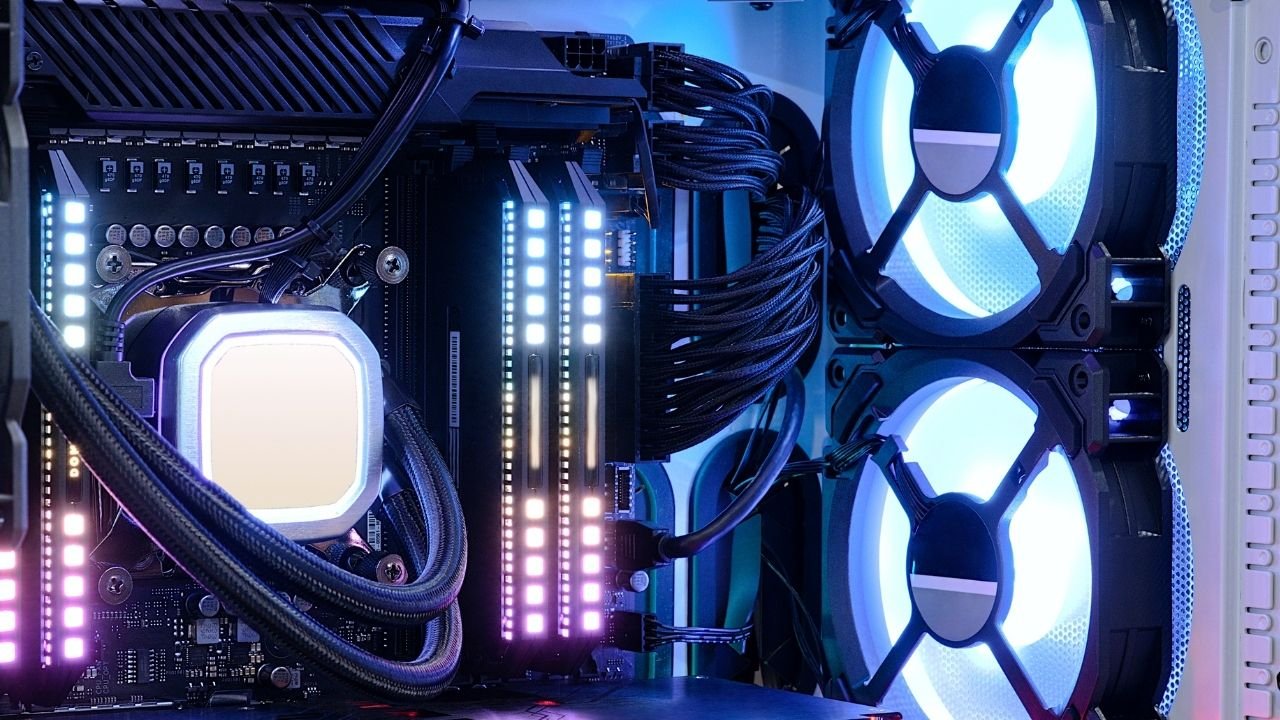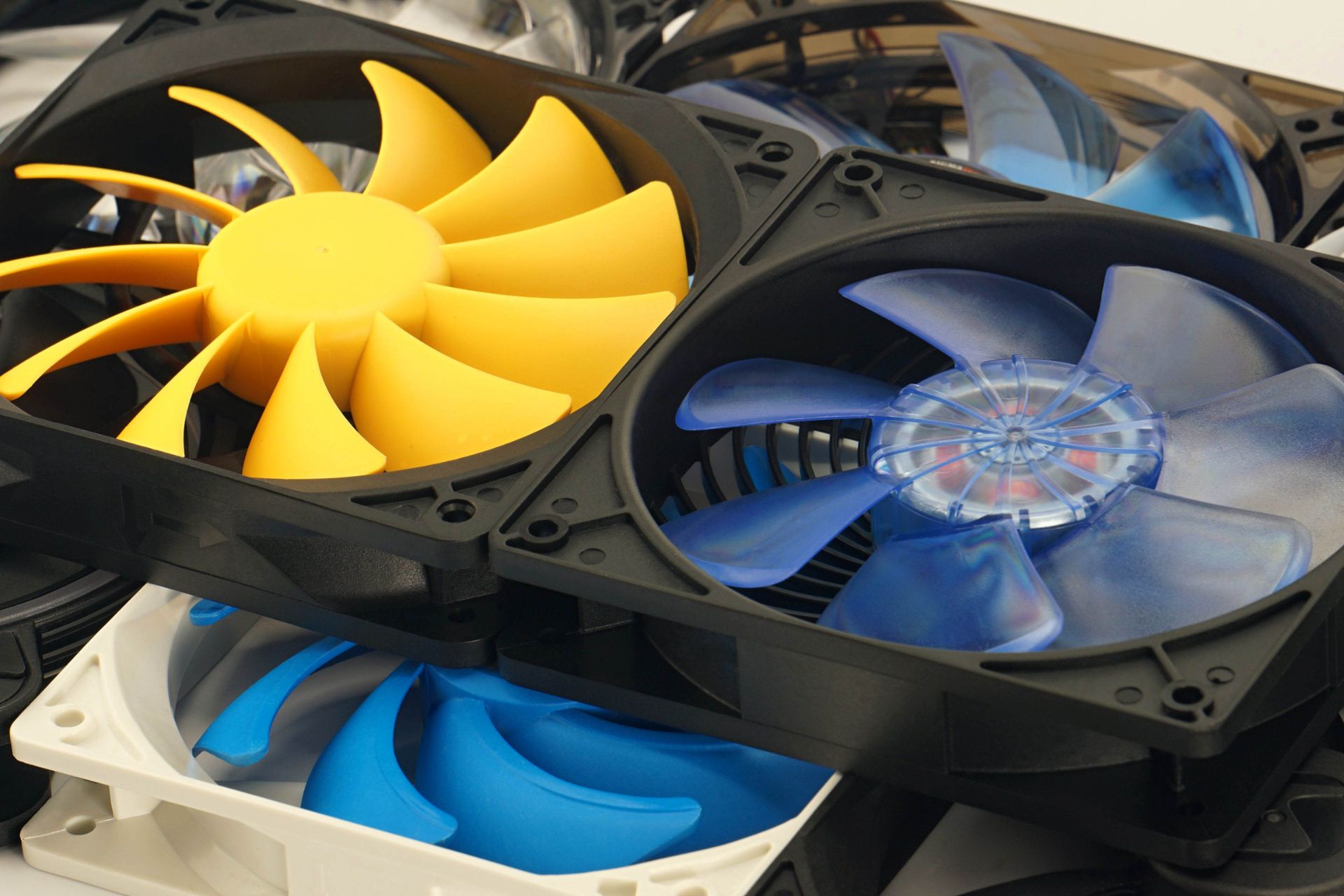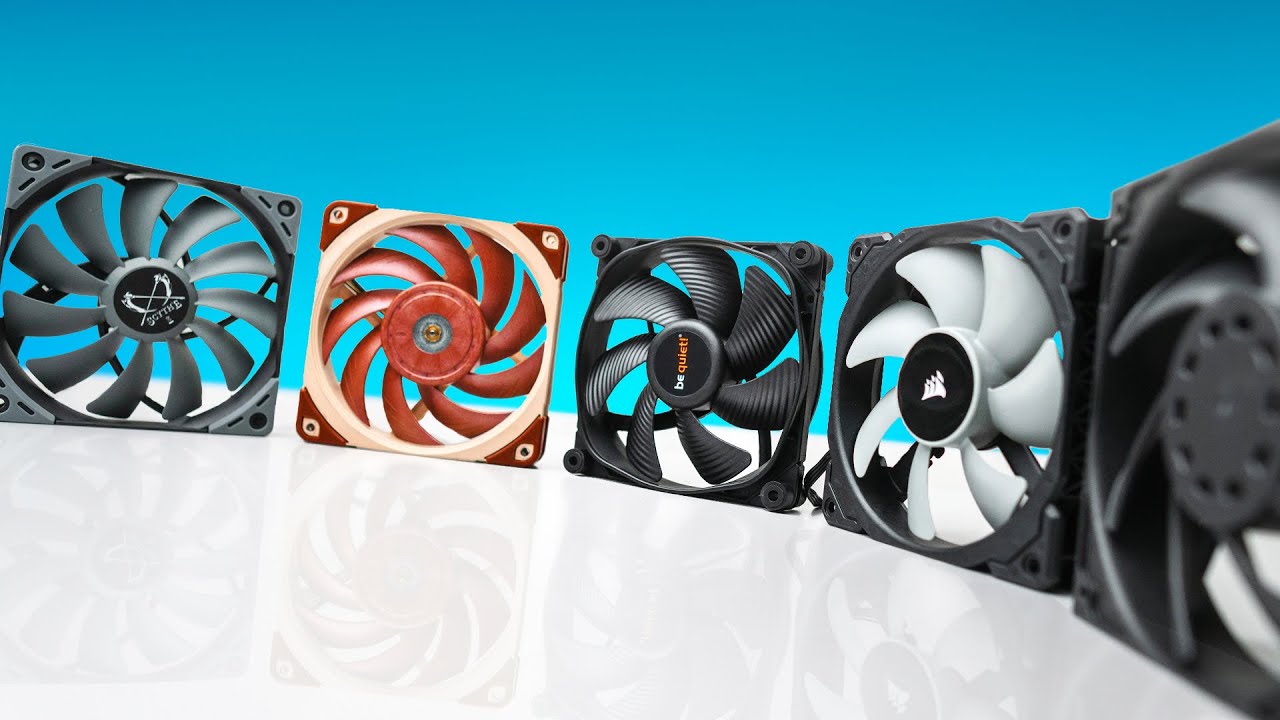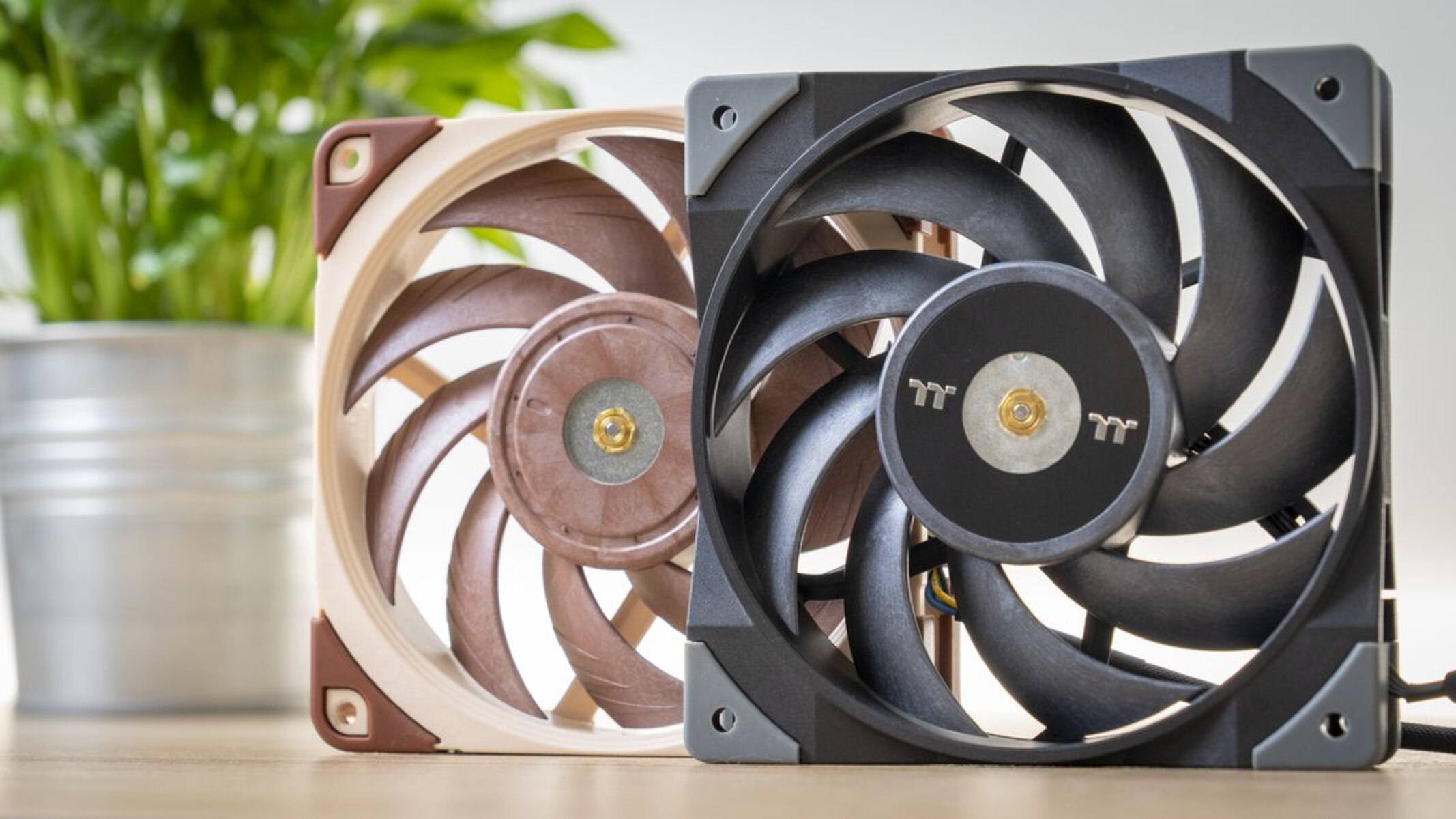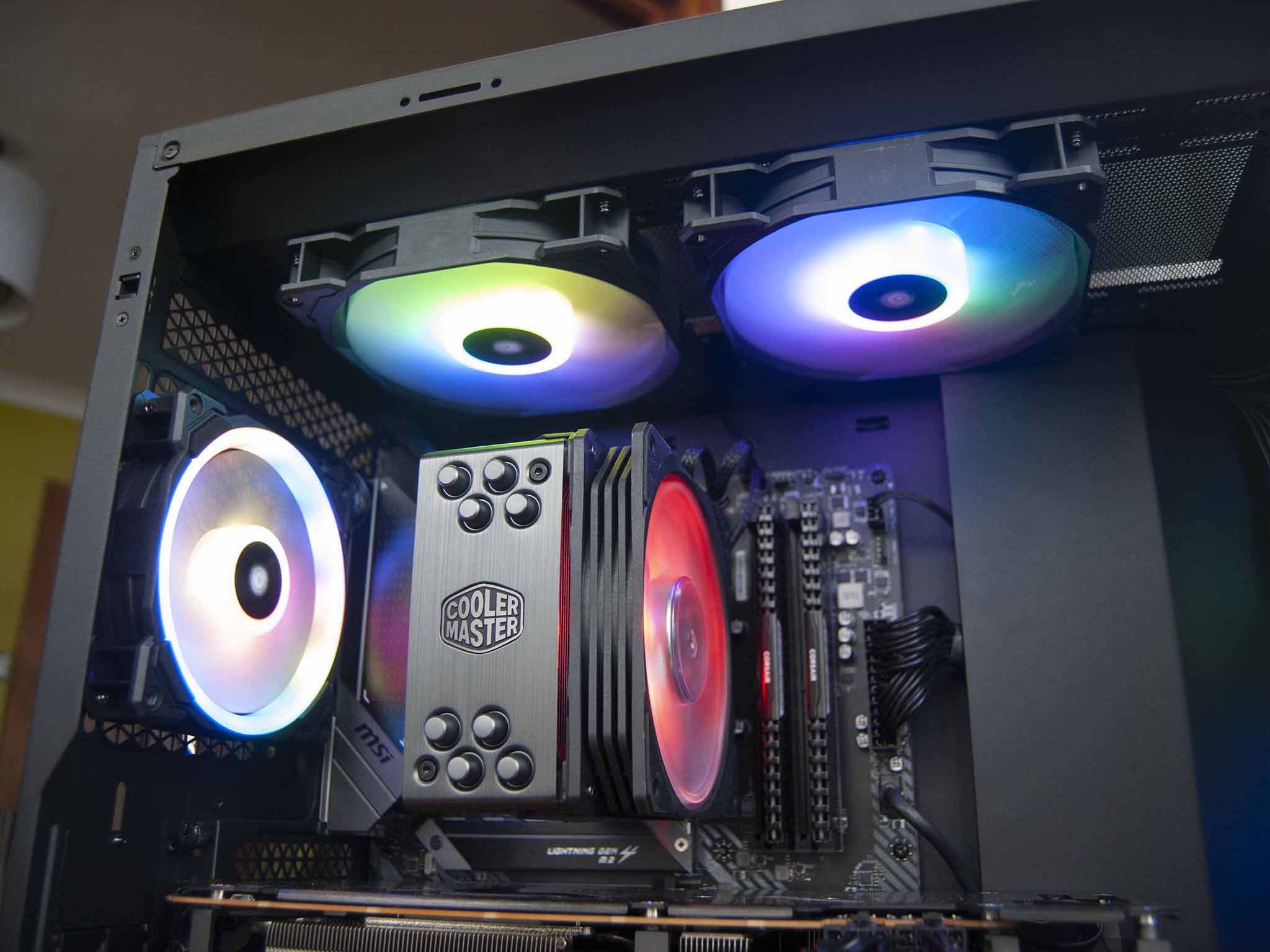Introduction
A computer’s cooling system plays a crucial role in maintaining optimal performance and preventing damage to its internal components. One key component of a cooling system is a case fan, which helps in dissipating heat generated by the computer’s hardware.
When it comes to selecting a case fan, one important factor to consider is static pressure. While high airflow fans are commonly used for general cooling purposes, high static pressure case fans are specifically designed to deal with highly restrictive environments, such as cooling systems with densely packed components or components with fins or heatsinks.
This article aims to provide an overview of high static pressure case fans, their differences from high airflow fans, their importance in cooling systems, their applications, factors to consider when choosing them, and some of the best high static pressure case fans available in the market. Whether you are a computer enthusiast, gamer, or someone looking to optimize the cooling performance of your system, this article will serve as a helpful guide in understanding the significance of high static pressure case fans and how to choose the right one for your needs.
What is a high static pressure case fan?
A high static pressure case fan is a type of fan specifically designed to excel in situations with restrictive airflow, such as cooling systems that have obstructions like heatsinks or densely packed components. Unlike standard fans, which are optimized for maximum airflow, high static pressure fans are engineered to push air efficiently through these obstructions.
The term “static pressure” refers to the resistance the fan encounters when pushing air through the system. In a cooling system with obstructions, the static pressure increases, making it harder for the air to flow and cool the components. High static pressure fans are designed to tackle this increased resistance and maintain a steady airflow.
These fans often feature a different blade design compared to standard fans. The blades are wider, curvier, and have a higher pitch to move the air more effectively. Additionally, high static pressure fans typically have a larger motor and sturdier construction to handle the increased strain caused by the resistance.
It is important to note that high static pressure fans are not suitable for all cooling scenarios. If your system has an unrestricted airflow or does not have any components that create obstacles, high airflow fans would be more appropriate. However, for scenarios where obstructions are present and maintaining a steady airflow is crucial for cooling, a high static pressure case fan is a great choice.
Common applications of high static pressure case fans include cooling solutions for high-end gaming PCs, workstations with intensive processing components, and servers with densely packed racks.
Next, let’s explore the difference between high static pressure fans and high airflow fans to better understand the characteristics and benefits of high static pressure fans.
Difference between high static pressure and high airflow fans
When it comes to cooling systems, two popular types of fans are high static pressure fans and high airflow fans. While both serve the same purpose of dissipating heat, they have distinct characteristics that make them suitable for different cooling scenarios.
High airflow fans, as the name suggests, are designed to maximize the volume of air they can move. They prioritize moving large amounts of air quickly, making them ideal for cases with minimal obstructions and unrestricted airflow. These fans are commonly used in scenarios where maintaining a low temperature across a large area is important, such as in open-air PC cases or cooling solutions for spacious server setups.
On the other hand, high static pressure fans are engineered to overcome resistance and maintain a steady airflow in highly restrictive environments. Unlike high airflow fans, these fans are optimized for pushing air through obstacles like heatsinks, radiators, or closely packed components. The key focus of these fans is to provide efficient cooling to specific areas within the system, ensuring that components are adequately cooled even in obstructed airflow scenarios.
The main difference between the two fan types lies in their blade design and motor strength. High airflow fans typically have wider blades with a lower pitch and a smaller motor, allowing for swift movement of air over a large area. In contrast, high static pressure fans feature narrower blades with a higher pitch and a larger, more robust motor. These design elements enable them to generate the required pressure to effectively push air through restrictions.
So, when should you choose a high static pressure fan over a high airflow fan? If your system consists of densely packed components, features heatsinks or radiators, or has limited ventilation, high static pressure fans are the better choice. They excel in providing targeted cooling to specific areas within the system, ensuring that critical components receive adequate airflow and remain at optimal temperatures.
On the other hand, if your system has an open layout with ample ventilation or requires overall cooling across a larger area, high airflow fans are more suitable. They prioritize moving a higher volume of air, making them effective in scenarios where restriction is minimal or non-existent.
Understanding the difference between high static pressure and high airflow fans allows you to make an informed decision when selecting the appropriate fan type for your specific cooling needs.
Importance of high static pressure fans in cooling systems
In any computer system, efficient cooling is crucial for maintaining optimal performance and prolonging the lifespan of the components. This is where high static pressure fans play a significant role. Let’s explore why these fans are important in cooling systems:
Effective heat dissipation: High static pressure fans are designed to push air through restrictive environments, such as heatsinks, radiators, or tightly packed components. By overcoming the resistance and maintaining a steady airflow, these fans effectively dissipate heat from critical components, preventing overheating and potential damage.
Targeted cooling: Unlike high airflow fans, which provide general cooling across a larger area, high static pressure fans excel in providing targeted cooling. They can focus their airflow on specific areas within the system where the heat is concentrated, ensuring that components receive adequate cooling even in highly restrictive scenarios.
Reduced noise levels: Due to their design and ability to maintain airflow in restrictive environments, high static pressure fans can often operate at lower RPMs compared to high airflow fans. This results in reduced noise levels while still maintaining effective cooling performance, making them ideal for noise-sensitive environments or for users who prioritize a quieter system.
Compatibility with cooling solutions: Cooling systems such as liquid coolers or heatsinks often feature dense fin arrays or radiator configurations. High static pressure fans are specifically designed to work efficiently with these types of cooling solutions, ensuring that heat is effectively transferred away from the components and dissipated into the surrounding environment.
Prevention of hardware failure: Overheating can lead to increased wear and tear on components, reduced performance, and even catastrophic failure in extreme cases. By utilizing high static pressure fans in cooling systems, the risk of hardware failure due to overheating is significantly reduced, increasing the longevity and stability of the system.
Whether you’re a gamer pushing your system to its limits, an overclocker seeking maximum performance, or a professional working with resource-intensive applications, implementing high static pressure fans in your cooling setup is essential. Their ability to provide targeted and effective cooling to critical areas within the system ensures that your hardware operates at optimal temperatures, leading to improved performance, system stability, and extended component lifespan.
Applications of high static pressure case fans
High static pressure case fans have a wide range of applications in various cooling systems. Let’s explore some of the common scenarios where these fans are highly beneficial:
Gaming PCs: High static pressure fans are a popular choice among gamers who build high-end gaming PCs. Gaming rigs often feature powerful CPUs and GPUs, which generate significant heat. Additionally, these systems may have tightly packed components and large CPU coolers or liquid cooling systems. By utilizing high static pressure fans, gamers can ensure efficient cooling of their components, preventing overheating during intense gaming sessions and maintaining optimal performance.
Workstations: Workstations, which are used for resource-intensive tasks such as video editing, 3D rendering, or scientific simulations, generate substantial amounts of heat. These systems typically have powerful CPUs, multiple GPUs, and high-density storage configurations. High static pressure fans are crucial in workstations as they provide effective cooling to dissipate the heat generated by these components, preventing performance throttling and potential hardware issues.
Servers: Servers, especially those in data centers, often have densely packed racks with multiple servers stacked closely together. This results in restricted airflow, making high static pressure fans essential for maintaining proper cooling. These fans are perfectly suited for server environments, ensuring efficient heat dissipation and preventing thermal-related issues that could impact server performance or even cause downtime.
Water-cooling setups: High static pressure fans are commonly used in water-cooling configurations, where radiators are employed to dissipate heat from the cooling fluid. These fans are positioned on the radiator to push air through the dense fins, maximizing the cooling effectiveness. The high static pressure generated by these fans allows for efficient heat transfer from the hot liquid to the ambient air, ensuring optimal cooling performance in water-cooling loops.
Silent PC builds: For users who prioritize a quiet PC experience, high static pressure fans can be an excellent choice. These fans often operate at lower RPMs compared to high airflow fans, resulting in reduced noise levels. By using high static pressure fans in a well-ventilated case with proper airflow management, users can achieve effective cooling while maintaining a quieter system.
These are just a few examples of the applications of high static pressure case fans. Any scenario where there is restricted airflow, tightly packed components, or the need for targeted cooling can benefit from the use of high static pressure fans. By considering the specific requirements of your cooling system, you can determine the appropriate use of high static pressure case fans to optimize cooling performance and ensure the longevity of your hardware.
Factors to consider when choosing a high static pressure case fan
When selecting a high static pressure case fan, it’s important to consider several factors to ensure that you choose the right fan for your specific cooling needs. Here are some key considerations:
Airflow and Static Pressure: Look for fans that offer a balance between airflow and static pressure. Higher static pressure allows the fan to overcome resistance and push air through obstructions, while sufficient airflow ensures efficient heat dissipation. Consider the specifications provided by the manufacturer, such as CFM (cubic feet per minute) for airflow and mmH2O (millimeters of water) for static pressure.
Fan Size: Ensure that the fan size matches the mounting points or available space in your case or cooling solution. Common sizes include 120mm and 140mm fans, though other sizes are available. Larger fans generally provide better airflow and lower noise levels, but compatibility is crucial.
Noise Levels: Noise can be a primary concern, especially if you’re seeking a quiet computing experience. Look for fans with a lower decibel (dB) rating for quieter operation. Some manufacturers provide noise level data in their fan specifications.
Bearing Type: Consider the fan’s bearing type, which affects its longevity and noise performance. Common bearing types include sleeve bearings, ball bearings, and fluid dynamic bearings. Fluid dynamic bearings generally offer smooth operation and longer lifespan.
Control Options: Some fans come with adjustable speed or PWM (pulse width modulation) control, allowing you to fine-tune the fan speed and noise levels based on system requirements. These control options can be beneficial for balancing cooling performance and noise output.
Build Quality: Look for fans with robust construction and reliable build quality. Fans with reinforced frames, sturdy materials, and quality components tend to have better durability and offer longer service life.
Brand Reputation: Consider reputable brands known for their cooling solutions. Established brands often have extensive experience and offer reliable products with good customer support.
Price and Value: Set a budget and consider the overall value the fan offers. Compare specifications, reviews, and features to assess whether a fan provides the performance and features you need at a reasonable price point.
Compatibility: Ensure that the fan is compatible with your case, cooling setup, and any other components in your system. Consider factors such as clearance, connector type (3-pin or 4-pin), and power requirements to ensure a seamless integration.
By considering these factors, you can narrow down the options and make an informed decision when choosing a high static pressure case fan that meets your specific cooling requirements.
Best high static pressure case fans in the market
When it comes to high static pressure case fans, there are several excellent options available in the market. Here are some of the best fans known for their performance and reliability:
- Noctua NF-A14 industrialPPC: This fan from Noctua is highly regarded for its exceptional static pressure and airflow. It features a robust build quality, a range of control options, and quiet operation. The NF-A14 industrialPPC is available in various speed and PWM models to suit different cooling needs.
- Corsair ML Series: Corsair’s ML Series fans are renowned for their strong static pressure capabilities and magnetic levitation bearing technology. With low noise levels and high performance, these fans deliver impressive cooling efficiency. The ML120 and ML140 are popular choices in this series.
- be quiet! SilentWings 3: Known for their whisper-quiet operation, the be quiet! SilentWings 3 fans offer excellent static pressure and airflow. These fans also feature a unique design and high-quality construction, making them a preferred choice for those seeking a balance between performance and silence.
- Fractal Design Venturi Series: The Venturi series from Fractal Design is specifically designed for high static pressure applications. These fans offer remarkable airflow and static pressure performance, making them suitable for both liquid cooling solutions and restrictive environments.
- Phanteks PH-F120MP and PH-F140MP: Phanteks offers the PH-F120MP and PH-F140MP fans known for their exceptional static pressure and airflow capabilities. With a focus on performance and durability, these fans come with specialized blades and a reliable design, making them a popular choice among enthusiasts.
Keep in mind that the selection of the best high static pressure case fan depends on your specific needs, the limitations of your cooling system, and personal preferences. Consider factors such as noise levels, speed control options, and compatibility with your case or cooling solution to make the best choice.
The above recommendations are based on reputation, customer reviews, and industry feedback, but it’s always advisable to do your research and read product reviews to determine which fan will best suit your requirements.
Installation and maintenance tips for high static pressure case fans
Installing and properly maintaining your high static pressure case fans is essential to ensure optimal cooling performance and longevity. Consider the following tips:
1. Positioning: Place your high static pressure fans strategically to direct airflow towards the components that require cooling the most. Consider the layout of your system, the location of heat-generating components, and any obstructions that may affect airflow.
2. Orientation: Pay attention to the orientation of the fans. Airflow direction can impact cooling effectiveness. For example, for liquid cooling setups, position fans as intake or exhaust depending on the layout of your radiator and the desired airflow path.
3. Cable management: Proper cable management helps optimize airflow within your case. Organize cables to minimize obstruction and ensure that they don’t interfere with fan operation. This allows for better airflow and more efficient cooling.
4. Dust filters: Consider utilizing dust filters to prevent dust and debris from accumulating on your high static pressure fans and other components. Regularly clean or replace these filters to maintain good airflow and prevent dust buildup that can hinder cooling performance.
5. Fan speed control: Depending on your needs and preferences, you may want to adjust the fan speed. This can be done through the BIOS settings or software control provided by the fan manufacturer. Balancing cooling performance and noise levels is crucial, especially in noise-sensitive environments.
6. Regular cleaning: Dust buildup on high static pressure fans can reduce their performance. Regularly clean your fans using compressed air or a soft brush to remove accumulated dust. Be mindful not to damage the fan blades during the cleaning process.
7. Check for vibrations: Make sure the fans are securely mounted to avoid any vibrations that may cause additional noise or lead to premature wear. Check the mounting screws regularly and tighten them if necessary.
8. Monitor fan performance: Keep an eye on your fan’s performance and temperatures through software utilities or BIOS monitoring tools. If you notice any unusual sounds, decreased airflow, or rising temperatures, investigate and troubleshoot accordingly.
9. Replace worn-out fans: Over time, fans may wear out and become less effective. If you notice a significant decline in cooling performance, consider replacing the fan with a new one to maintain optimal airflow and cooling efficiency.
By following these installation and maintenance tips, you can ensure that your high static pressure case fans operate at their best, providing efficient cooling for your system and helping to extend the lifespan of your components.
Conclusion
High static pressure case fans play a crucial role in maintaining efficient cooling performance in restrictive environments. These fans are specifically designed to overcome resistance and provide targeted airflow to components that require effective cooling, such as heatsinks, radiators, or densely packed systems. Understanding the differences between high static pressure and high airflow fans is essential in choosing the right fan for your specific needs.
When selecting a high static pressure case fan, consider factors such as airflow, static pressure, fan size, noise levels, bearing type, control options, build quality, brand reputation, price, and compatibility. By taking these factors into account, you can make an informed decision and ensure optimal cooling performance in your system.
Some of the best high static pressure fans in the market include the Noctua NF-A14 industrialPPC, Corsair ML Series, be quiet! SilentWings 3, Fractal Design Venturi Series, and Phanteks PH-F120MP and PH-F140MP fans. Consider your specific requirements, such as noise levels, control options, and compatibility, when choosing the best fan for your cooling setup.
Proper installation and maintenance of high static pressure case fans are important for long-term performance. Position the fans strategically, manage cables for good airflow, use dust filters, clean the fans regularly, monitor their performance, and replace worn-out fans when necessary. These steps will help ensure optimal cooling efficiency and prolong the lifespan of your components.
By understanding the importance of high static pressure case fans and implementing the appropriate cooling solutions in your system, you can enjoy improved performance, system stability, and longevity of your hardware.







